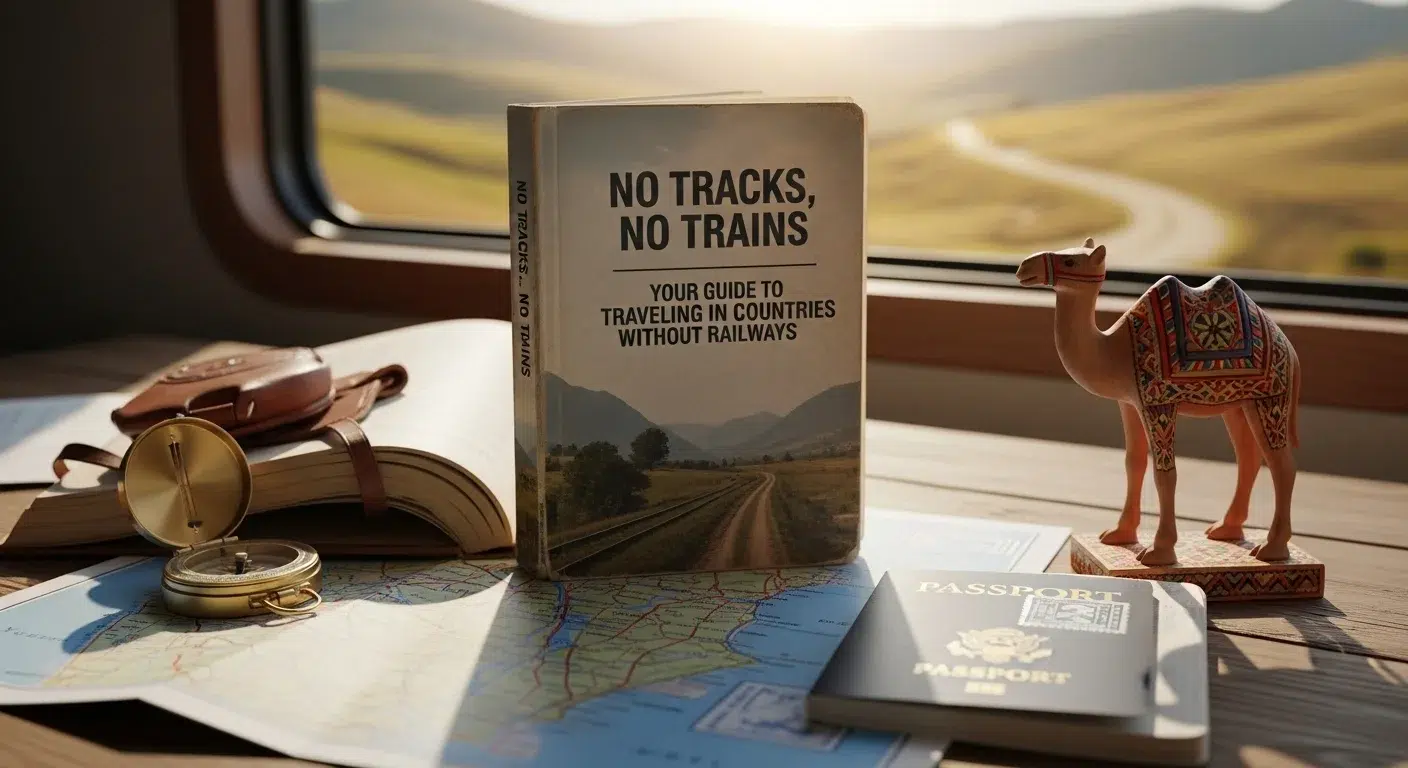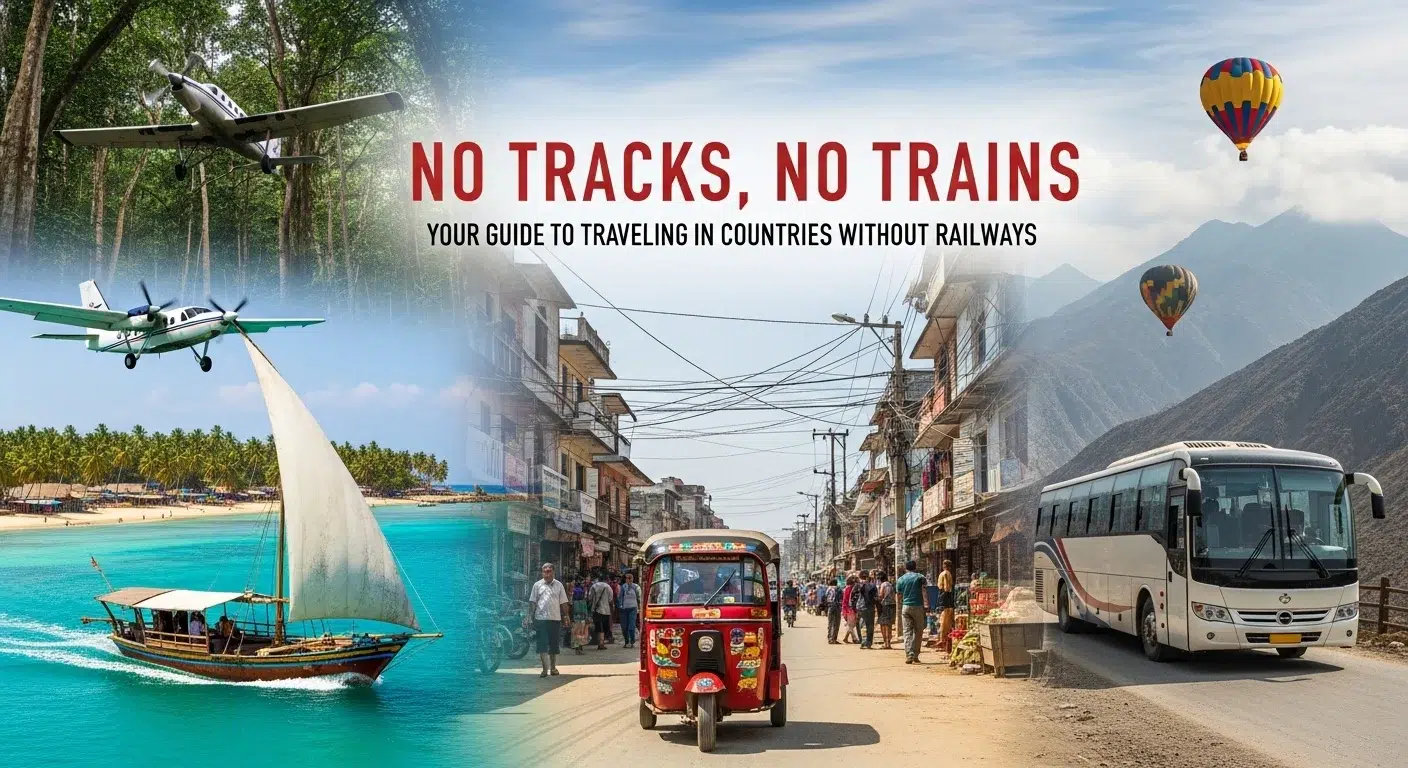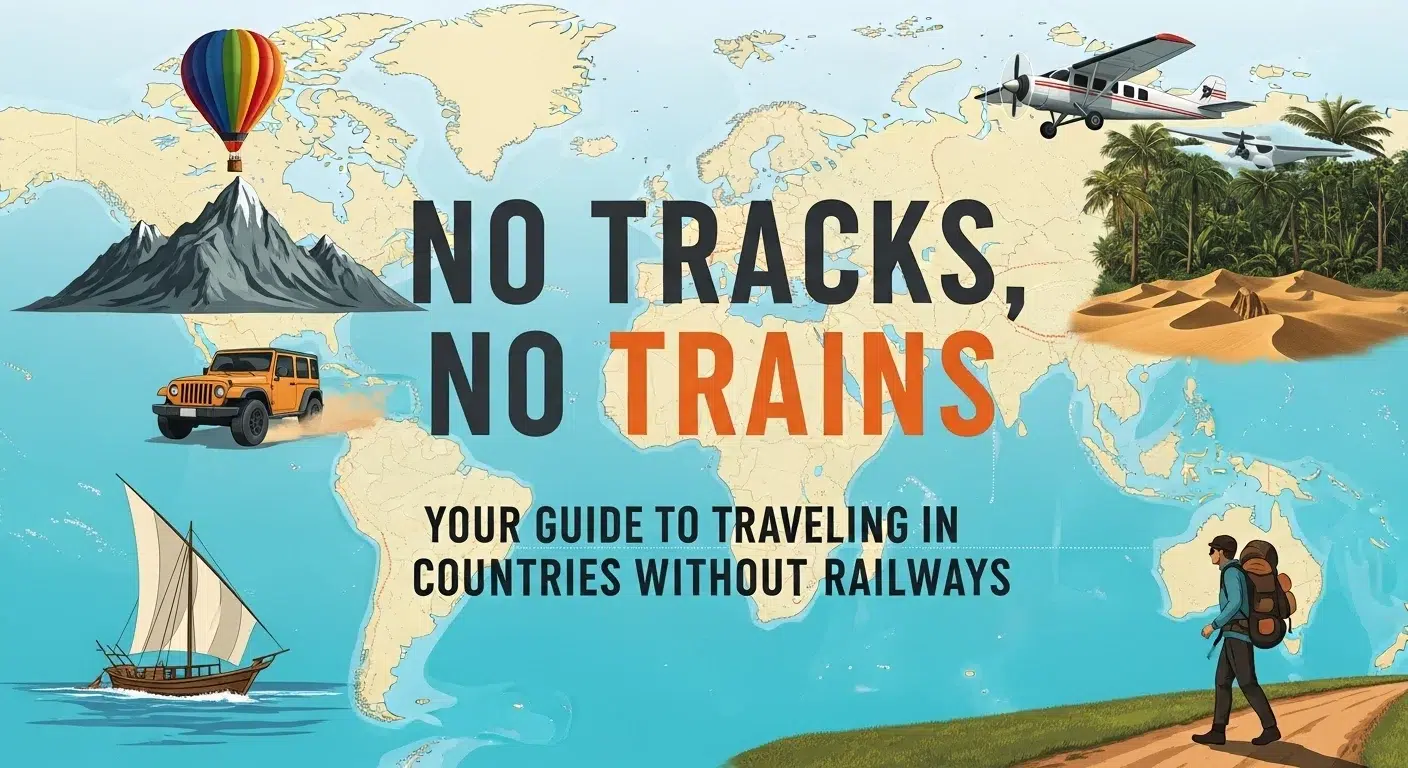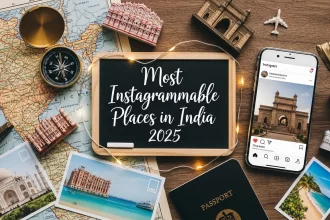For many travel lovers, a train journey is the ultimate adventure. But what if your dream destination has no railway tracks at all? It might be surprising, but a number of places around the world operate perfectly without them. From tiny microstates to sprawling island nations, these countries without railways rely on a fascinating mix of roads, buses, boats, and even magnificent cable cars to get around.
Let’s explore some of the most prominent examples and discover how you can navigate them like a local.
Why Don’t Some Countries Have Railways?
The reasons are as diverse as the countries themselves. Often, it comes down to a few key factors:
- Economics: For small nations or those with low population density, the massive cost of building and maintaining a rail system is simply not worth the investment.
- Geography: Extreme landscapes—like glaciers, vast deserts, or high mountain ranges—can make laying tracks an impossible or highly uneconomical task.
- Modern Alternatives: Many of these rail-free countries have instead invested in excellent highway networks, efficient bus systems, or affordable domestic flights that meet all the travel needs of their residents and visitors.

Europe’s Rail-Free Outliers
Iceland
This famous travel destination has a thriving tourism industry but no public rail system. Due to a small, concentrated population and challenging volcanic terrain, buses and the legendary Ring Road are the primary modes of travel.
- How to Get Around: Renting a car is the most popular way to explore the Ring Road. For budget travelers, the public bus system (Strætó) is a reliable option connecting towns. If you’re short on time, domestic flights can take you to remote destinations like Akureyri or Egilsstaðir in a flash.
Andorra
This small, mountainous Pyrenean nation is a landlocked microstate with no national railway. Instead, it relies on frequent and fast cross-border buses that connect it seamlessly to the Spanish and French rail networks.
- How to Get Around: The country’s dense internal bus system is perfect for getting between villages and ski resorts. For long-distance travel, direct coaches run to major cities like Barcelona and Toulouse.
Cyprus
Cyprus, a country that once had a colonial-era railway, dismantled its tracks decades ago. Today, mobility depends entirely on its modern highway system and a comprehensive network of intercity buses.
- How to Get Around: The Intercity Buses are a popular choice, with frequent services linking major cities like Nicosia, Limassol, and Paphos. For total freedom to explore the island’s many hidden gems, renting a car is a great option.
San Marino
Though it has no railway, this historic microstate has a unique and beautiful solution. A magnificent aerial cable car links the lower town of Borgo Maggiore to the historic city center atop Mount Titano, offering breathtaking views.
- How to Get Around: Ride the scenic cable car for quick access to the hilltop fortress. To reach the country from Italy, simply take one of the frequent buses from nearby Rimini station.
West Asia: Where Roads Rule
Kuwait
Kuwait has no operational railway system, with plans for a metro and GCC rail still on the drawing board. Public transport in the city is managed by the state-run KPTC, which provides extensive bus routes.
- How to Get Around: You can navigate the city with the KPTC bus network and supplement your trips with taxis.
Oman
This beautiful sultanate has an excellent, modern road network but no national rail service. The well-maintained roads and highways make bus travel a comfortable experience.
- How to Get Around: Use the public Mwasalat bus network to connect major cities like Muscat, Sohar, and Salalah. Alternatively, the roads are in such good condition that driving yourself is a popular and easy choice.
Yemen
Yemen lists 0 km of railway in historical CIA data and remains without a national rail service. Given terrain and conflict, travel depends on roads and limited flights.
- How to get around: When travel is possible and safe, movement is mostly by road; always check current advisories.
South Asia’s Holdouts
Bhutan
Bhutan’s stunning mountainous terrain and commitment to environmental preservation mean that it has no railways. Travelers rely on mountain roads, buses, and taxis to navigate this beautiful Himalayan kingdom.
- How to Get Around: Long-distance buses must be booked in advance. Be prepared for slow, winding journeys—travel times can be much longer than you expect due to the challenging terrain.
Maldives
With its islands spread across the Indian Ocean, a railway would be completely impractical here. The transport system is entirely dependent on water and air travel.
- How to Get Around: Resorts arrange boat or seaplane transfers for their guests. For travel between local islands, a network of public ferries provides a more affordable but slower option.
Timor-Leste (East Timor)
No rail network here either; transport is by road in rugged terrain and coastal boats on select routes.
- How to get around: Expect slow but scenic road travel; shared minibuses (“microlets”) operate around Dili.
Africa: Roads, Rivers, Buses and Future Plans
The Gambia
Africa’s smallest mainland nation has no railways, but its compact size and river crossing by ferry keep people moving; buses and shared taxis connect towns.
- How to get around: Use the Banjul–Barra ferry to cross the Gambia River; minibus “gelé-gelé” services handle most local trips.
Guinea-Bissau
There’s no national rail system; mobility is by road and boat in the Bijagós archipelago.
- How to get around: Overland buses are basic; boats are essential to reach islands.
Somalia
Somalia lists no railways and depends on roads and domestic flights where security allows.
- How to get around: Plan conservatively and check current guidance; air links often substitute for long overland routes.
Rwanda
Rwanda doesn’t operate national rail (regional projects are under discussion). Intercity movement is efficient by bus, with companies like RITCO connecting Kigali to major towns. Moto-taxis dominate for short hops.
- How to get around: Buy bus tickets at Kigali’s main terminals; expect orderly queues and fixed fares.
Burundi
Burundi has no rail; public transport is a mix of minibuses and taxis, with intercity coaches linking to neighbors.
- How to get around: In Bujumbura, expect shared minibuses; for regional trips, look for international coaches to Kigali, Kampala, or Dar es Salaam.
Niger
Niger built a short Niamey–Dosso line a decade ago, but it remains orphaned and unused, leaving the country effectively without functional rail service. Roads and buses are primary.
- How to get around: Long distances and heat make planning essential—carry water, travel in daylight, and use reputable operators.
Chad
Chad has no operational railway; plans to link to Cameroon are long-running. Commerce and travel rely on highways that can be challenging in the rainy season.
- How to get around: Choose 4×4 vehicles off major routes; schedule buffers during the wet season when wadis flood.
Central African Republic (CAR)
CAR has no railways and limited paved roads; people and freight depend on roads, rivers (notably the Ubangi), and air.
- How to get around: River transport and flights can be more reliable than roads; plan flexible itineraries.
The Americas: Buses and Shared Taxis Rule
Belize
Belize operates without rail, leaning on highways and a network of privately run buses that locals rely on for daily travel.
- How to get around: Expect frequent, low-cost “James Bus”–style services on main corridors; water taxis connect coastal towns and cayes.
Haiti
Haiti once had rail and tramways, but no operational railway exists today. Mobility is by bus, minivans, and the iconic “tap-tap” shared taxis; boats link coastal communities.
- How to get around: Tap-taps are cheap but crowded; for comfort, look for coach services on national routes.
Read Also: Most Famous Landmarks Every Traveler Must See at Least Once
Planning Tips for Countries Without Railways

- Assume road time, not rail time. Distances that look short can take longer thanks to terrain, ferry timing, or border checks.
- Lean on official bus networks. For reliability and safety, start with national carriers or government-listed routes (e.g., Strætó in Iceland, Mwasalat in Oman, Intercity Buses in Cyprus, RITCO in Rwanda).
- Use boats and ferries on islands and river nations. From Maldives seaplanes/speedboats to the Banjul–Barra ferry in The Gambia, water is often the fastest way.
- Consider domestic flights. In places like Iceland or large African states, short-haul flights can save a day.
- Self-drive with care. Road conditions vary: desert heat in Oman and Kuwait, mountain switchbacks in Bhutan and Andorra, rainy-season washouts in Chad and CAR.
- Watch for future projects. Some countries are planning or reviving rail (e.g., GCC concepts for Kuwait/Oman; Chad–Cameroon studies; Niger’s unresolved Niamey–Dosso line). Plans shift—check the latest before you go.
Read Also: 8 Incredibly Scenic Visa-Free Island Nations That Every Indian Traveler Must Visit at Least Once
Final Takeaway: Traveling Without a Train is an Adventure
These countries without railways show that you don’t need a train to have a memorable trip. Whether you’re navigating the misty mountains of Bhutan, taking a ferry in The Gambia, or driving a jeep across the desert in Oman, the lack of a train often defines the unique adventure. By planning ahead, using reputable local bus or ferry operators, and allowing for extra time, you’ll discover that no tracks, no trains is not a limitation – it’s simply a different way to explore.







